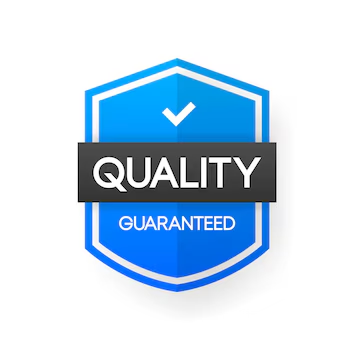respond of 100 or more words to following 3 discussion separately on (While the causes of congestion might be understood the solutions may not be. Do you agree or disagree? State your views in terms of transportation geography. (Note: Carefully explore what the term ‘congestion’ means before you answer.) Responses should be a minimum of 100 words and include direct questions.
1. When you drive on a highway in any state within the United States, there will be congestion at some point during the day. Congestion is when there are excess vehicles on the road at the same time. Bicycles, Buses, Cars, Motorcycles, and Trucks all have to share the road. The leaders within a state and a city must do things to improve the congestion in their area.
One of the things that leaders can do to improve congestion is build a bicycle lane for bike. This will prevent bike from getting in the way of other vehicles. Another thing that leaders can do is creates a bus system that travels all over the city. Some people would use the bus system instead of driving in that congested area . The best way to get some of the vehicles off the road is to build a subway. The subway is not using the highway, so there will be less traffic on the road. But, sometimes cities don’t have the ability to build a subway.
The last way that state and city leaders could reduce congestion on a highway is to made the highways wider. Making the highways wider would give vehicles more room. Improving congestion on highways would improve everyone way of life. People would spend less time on the roadway and this would speedup the flow of traffic. Companies that are moving their products from one location to the next, could move their product faster with good flowing traffic. We should all be able to use a highway and not sit in congested traffic for a hour.
2. Transport geography is a sub-discipline of geography concerned about the mobility of people, freight and information and its spatial organization considering attributes and constraints related to the origin, destination, extent, nature, and purpose of movements (Rodrigue et al., 2020, Chap 1). Concerning congestion, transportation geography covers more than just road traffic congestion that many people would naturally assume.
Therefore, I disagree that the causes of congestion are generally understood, nor the recommend solutions to solve it.
Congestion arises when a mean surpasses the designed capacity, which occurs during peak hours (Rodrigue et al., 2020, Chap 8).
I live about 45 minutes north of Seattle, WA, and there is a significant issue of the mobility of people and freight because it is geographically limited by the water mass and rolling terrain. As more people gravitate to the area because of the career opportunities with multiple-million dollar corporations, housing developers have flattened many forest areas to construct additional homes to handle the housing demand.
According to Vimala, limited land, construction materials, water equates to more significant challenges of congestion (Vimala, 2006). Countless homes are demolished and rebuilt to fit the new needs of families, but we still relying on the same roads built decades ago.
Additionally, the transportation network in my area is geared towards independent vehicle transportation. There are very few sideways for pedestrians to travel or bike lanes to ride.
Washington Department of Transportation’s attempt to handle the congestion issue is to allow vehile divers to utilize the highway should lanes during peak hours. I think that is a great and inexpensive fix to the problem, but I would make the shoulder lane available only public transportation vehicles.
If there was a way to change the perception of mass transit, where it can be viewed as beneficial, I believe many people might consider using it.
3.With the consideration of transportation geography one can have a sound perspective in regards to eliminating congestion, and playing a pivotal role in conjuring a sound solution. Considering congestion in the transportation world, there are many considerations to take into play, such as weather, lack of infrastructure (gateways or hubs), or routes. As stated by Rodrigue, J., & Comtois, C. (2013) Congestion is spatially bound. It takes place in specific locations with impacts at a multitude of scales, from a particular highway intersection that may delay traffic over a few hundred meters, to blockage in a port that may disrupt the flow of goods over half a continent. When road conditions are bad such as iced roads, traffic jams or construction blockage, and gateways or hubs are limited, then space is consumed allowing for insurmountable traffic to overwhelm that particular element. When these complications arise, the rate at which goods are delivered is directly hindered and therefore other solutions need to be considered in order to effectively mitigate further ramifications.
In order to render a sound solution that can be understood, one needs to look at transportation geography from a Geographical Information System perspective. GIS can help alleviate congestion, by bridging that gap in regards to establishing comprehensive locations, logical and geometric relationships. This can be done by identifying pathways, hubs and routes which can be utilized for efficiency purposes. The main impact of GIS on transportation economics in regards to costs is that it allows transportation economics to identify the relationships between the operational features of a transportation network, and can be used to investigate the influence of infrastructure failure and its impact on traffic conditions (Sinha, K. C., & Labi, S. (2007) p.489).
GIS can have a very positive impact on future projects, and render solutions for congestion problems. For instance, if a city wants to incorporate further, road infrastructures (i.e. bridges, overpasses, and highways) that provides for ease of access for transportation vehicular modes to move back and forth and reduce congestion, then GIS could play that pivotal role. It would allow for the city transportation managers to effectively review the citys overlay, and see where these infrastructures can be placed, that will provided improved visual impact, reduced lead-times for vehicles to get in out of traffic and constant efficiency throughout. In the end, GIS allows for a transportation manager to effectively analyze a projects potential impact and implement performance measures that will improve it for before being brought to fruition.





 June 25th, 2020
June 25th, 2020 

